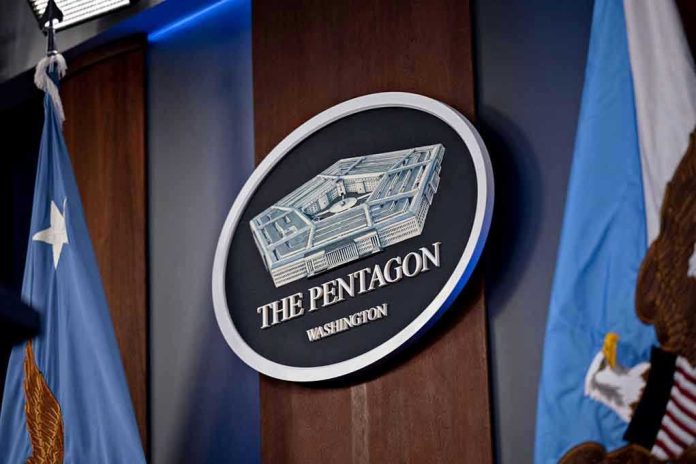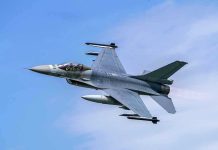
The US Army’s plan to buy one million drones by 2028 signals the most radical shift in military doctrine and battlefield technology since the introduction of the tank, and it’s all fueled by lessons drawn from Ukraine’s drone-saturated war zones.
Story Snapshot
- Army aims to purchase at least one million drones within three years, a twentyfold increase over current rates.
- Initiative responds directly to the transformative impact of drones in the Russia-Ukraine conflict.
- Public-private partnerships and the new SkyFoundry program will drive rapid drone manufacturing and innovation.
- Plan promises to reshape the US defense industry, military tactics, and the broader global arms race.
Army’s Million-Drone Gamble: A New Era of Warfare
In November 2025, Army Secretary Dan Driscoll stood before the press at Picatinny Arsenal and declared a future that would have sounded like science fiction just a decade ago: the US Army will field at least one million drones by 2028. Driscoll’s announcement didn’t just unveil a procurement goal; it signaled the Army’s full-throttle pivot into the era of drone warfare—a pivot inspired by the harrowing, drone-infested battlefields of Ukraine, where $500 quadcopters have outmaneuvered million-dollar air defenses and rewritten the rules of combat.
Internally, the Army’s transformation began in early 2024, as wargames and after-action reports from Eastern Europe exposed a glaring capability gap. By April 2025, Defense Secretary Pete Hegseth ordered a doctrinal overhaul, mandating that drones become standard kit at every division. The Army’s present output—about 50,000 drones per year—looked laughably small compared to the demand now staring them in the face. The million-drone plan would require scaling procurement and manufacturing at an unprecedented rate, blending public-private partnerships like the SkyFoundry program with a surge in in-house production.
Lessons From Ukraine: Why Drones Became the Deciding Factor
The Army’s urgency comes as no surprise to anyone tracking the Ukraine conflict. There, both Russian and Ukrainian forces have flooded the skies with swarms of small, cheap drones. These aren’t just eyes in the sky; they’re kamikaze weapons, spotters for deadly accurate artillery, and psychological tools that force entire brigades to cower indoors. The US military, with its legacy focus on large, expensive drones like the MQ-9 Reaper, suddenly found itself years behind. The new approach targets nimble, expendable weaponized drones—FPV kamikazes and munition-droppers—capable of being fielded by the thousands and produced at home.
Army analysts and defense experts agree: This is not just a technological shift, but a doctrinal revolution. Where once drone acquisition was measured in hundreds, now it must scale to hundreds of thousands yearly, requiring a robust supply chain, access to rare earth materials, and a reinvigorated domestic manufacturing base. The SkyFoundry initiative promises to unite defense giants and tech startups to meet these demands, while also addressing longstanding concerns over foreign-sourced components and supply chain fragility.
Industry Mobilization and the Race to Regain the Lead
SkyFoundry, the Army’s new public-private partnership program, stands at the heart of this transformation. The program’s mandate: foster US-based innovation, boost manufacturing, and ensure access to critical components. This is more than just a procurement binge; it’s a bet on America’s industrial might. Defense contractors and tech startups alike are scrambling to secure contracts, scale up production lines, and deliver the next generation of battlefield drones. Congress, meanwhile, sees not only a national security imperative but a potential windfall for American jobs and local economies.
For soldiers, this means new training pipelines and unfamiliar tactics. For the defense industry, a once-in-a-generation opportunity to redefine its own relevance. And for global rivals, a warning shot: the US intends to close the drone gap, and fast. Yet, challenges abound—scaling production without sacrificing reliability, integrating new tech into existing force structures, and ensuring robust electronic countermeasures against adversaries who are also learning quickly.
Strategic Risks and the Unanswered Questions
While the Army’s plan enjoys broad support among military strategists and industry leaders, critics are quick to point out the risks. Overreliance on drones—especially unproven or easily jammed models—could create vulnerabilities if adversaries develop effective countermeasures. The logistical feat of moving from 50,000 to one million drones in three years is daunting, with unknowns about workforce, supply chains, and the reliability of new manufacturing partners. And as the Army races to integrate swarms of small drones, questions linger about doctrine, rules of engagement, and the ethical boundaries of automated warfare.
Yet, the momentum is unmistakable. Army leaders, emboldened by lessons from Ukraine, see no alternative but to act—and act fast. The million-drone initiative is not just about matching Russia or Ukraine; it’s about ensuring that American forces remain the most technologically advanced and operationally flexible in the world. As the first drones roll off new assembly lines, expect ripple effects across the entire defense ecosystem—from battlefield tactics to economic policy, from congressional debates to the global arms race.






